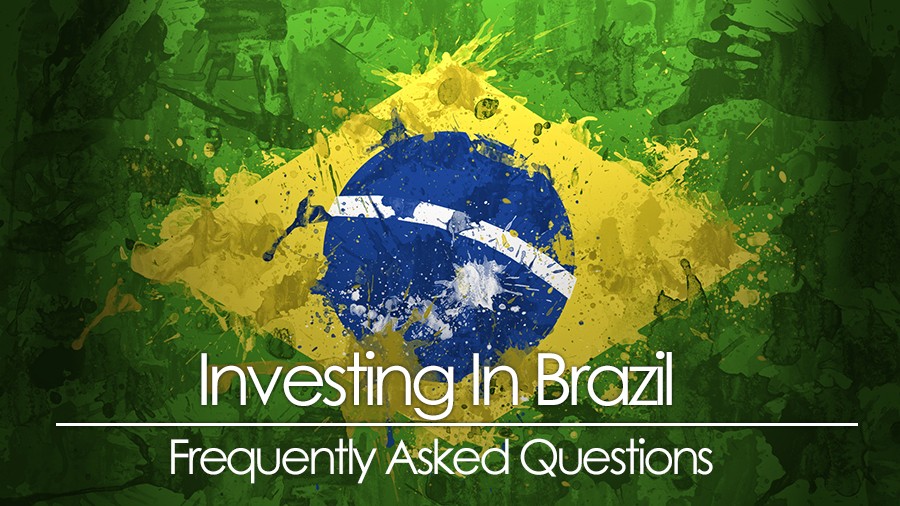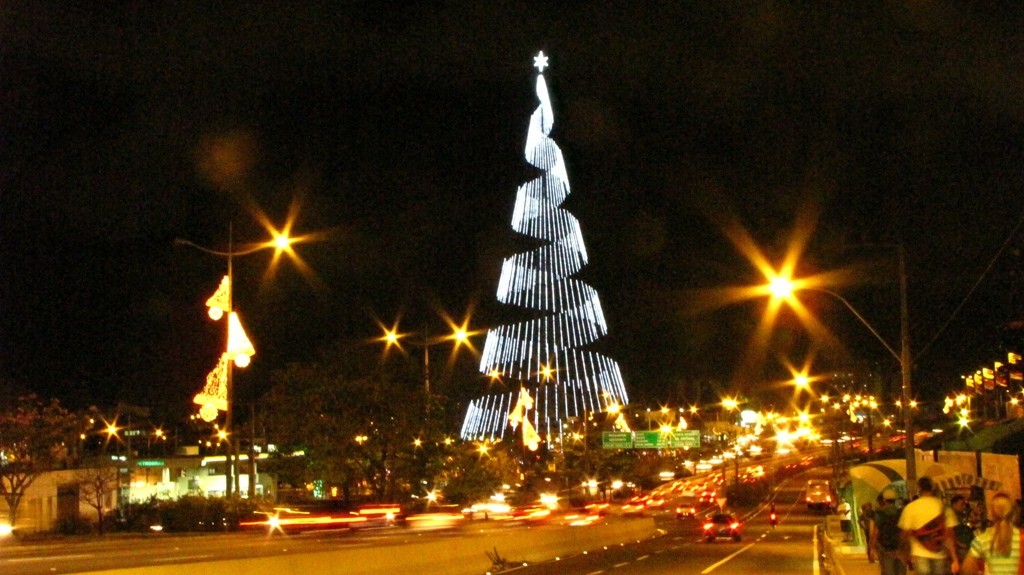Investing In Brazil 101
Post on: 31 Май, 2015 No Comment

In a world full of undiscovered prospects, it is never too late to try something new. Investors now looking for alpha and beta can think about adding a little bit of samba to their portfolio. With a steadily growing economy, a stable financial market and a liberal investment climate, Brazil has the potential to emerge as the dark horse in the race among emerging markets. But for that, Brazil just needs to continue on its present course without doing anything dramatic. Read on to find out what Brazil has to offer for the global investment community.
Two Options for Getting Your Feet Wet
International investors have two options for investing in the Brazilian stocks. The first option in to go straight to the place of action by investing in stocks listed on the Brazilian stock exchange. The second option is to try the offshore investment route available in the form of American depository receipts (ADRs), global depository receipts (GDRs), exchange-traded funds (ETFs) and mutual funds focused on Brazil or Latin America. No matter which option you choose, it’s important to learn more about this exciting location. (Learn about ADRs in our ADR Basics Tutorial . )
An Overview of the Brazilian Economy
The Brazilian economy is the 10 th largest economy in the world. During the period 2004-2008, the economy grew at the rate of 4-5%on average. Many would consider this growth rates to be less impressive than rates seen in China and India, but Brazil nevertheless continues to be an investment hotspot. Brazil is one of the few countries in the world that are self-sufficient in oil, which plays a very crucial role in global economy. Brazil is also a leader in alternative energy sources; it produces more ethanol than the combined production of Asia and Europe. Brazil is also the second largest producer of iron ore in the world.
With this abundance of natural resources, Brazilians are manufacturing everything from aircrafts to hair pins. The decades of hyper-inflation and unstable domestic currency seem to be over. There is a long list of positive points that make Brazil a promising candidate for spectacular growth. (Read about how inflation can impact your portfolio in Coping With Inflation Risk .)
A Stock Market with its Own Megabolsa
Brazil has one of the most sophisticated stock exchanges called BM&F Bovespa which was created in 2008 by the merger of the Brazilian Mercantile & Futures Exchange (BM&F) and the Sao Paulo Stock Exchange (Bovespa). The Sao Paulo Stock Exchange was established in 1890. The integrated BM&F Bovespa offers a host of products for trading such as stocks, ETFs, futures, commodities, forwards, options, corporate and government bonds etc. Nearly 450 firms are listed on Bovespa. All trading in equity and equity derivatives take place at Bovespa on an order driven electronic trading platform called Megabolsa. The second largest stock exchange in Brazil is the Rio de Janeiro Stock Exchange (BVRJ) which trades in government bonds and currencies.
Trading Mechanism at MM&F Bovespa
All transactions of buying and selling of equities are electronically processed by Megabolsa. The exchange provides a home broker facility which enables placing of orders through internet trading facilities offered by stock brokers. The exchange also provides direct market access (DMA) through participating brokers to both individuals and institutional investors for placing orders directly into the Megabolsa trading system. The Megabolsa order book is organized on best price/time priority. The presence of market makers is not compulsory; however, certain stocks do have market makers who are required to be present in the market on a continuous basis for placing bid and ask prices for a given volume of securities.
Before commencement of the regular trading session there is a 15 minute pre-opening phase in which orders are placed in the system for establishing the opening price (opening calls). During the last five minutes, there are closing calls for all stocks comprising indexes and for the option series of underlying shares that comprise the IBrX-100 (one of the market indexes) theoretical portfolio. Closing calls help in establishing more transparent closing prices, which is good for any fund that tracks Brazilian stock market indexes. Settlement of all trades in the equity market takes place on T+3, that is, any trade made on Monday gets finally settled by Thursday.
Trading Hours
The regular trading session is from 10am to 5pm Brasilia Time and from 11am to 6pm Brasilia Time during daylight saving time months. Brazil regular hours are at GMT – 3:00 Hrs and the daylight saving time is at GMT – 2:00 Hrs (normally valid from October to March). The market also provides a facility for trading after regular trading hours from 5:30pm to 7pm (from 6:30pm to 7:30pm during daylight saving time months). The after-market trading takes place within specified parameters such as price variation, maximum number of securities per operation and a limit on the financial value for trading via the home broker facility.
Market Indexes
There are about dozen of indexes pertaining to stocks listed on BM&F Bovespa. The most popular index is the Bovespa Index (IBovespa) which covers about 80% of the trades taking place in terms of volume and about 70% of the market capitalization of the exchange.
Investing in Brazil for Outside Investors

Brazil has one of the most liberal investment climates for outside investors. Non-resident investors, both individuals and legal entities, can invest in most of the financial and capital market instruments available to resident investors, without any restrictions. However, non-resident investors are required to hire local entities to act as custodian and representative for regulatory and tax related issues. Investors are also required to complete other formalities like registering with the Brazilian Central Bank, the stock market regulator CVM and the Federal Revenue Service.
Investors desiring a shorter route can use the option of operating as participants (passengers) in collective accounts registered in the name of some other investor. All funds coming in and going out of Brazil must be registered at the Central Bank through declarations submitted through electronic means. For placing orders on the stock exchange, you also need to select a member brokerage firm of BM&F Bovespa. Most of the financial institutions located in Brazil provide diverse services pertaining to registration and investment under the same roof.
Offshore Investment Opportunities
In case you are not yet ready for the direct route, you can think of using some of the options available closer to home. Outside investors can invest in the underlying stocks of some of the well known Brazilian companies by investing in ADRslisted in American stock exchanges and GDRs listed in European markets. In 2008, Forbes’ Global 2000 list included 34 Brazilian companies, many of which trade on American stock exchanges in the form of ADRs. All ADRs are denominated in dollars and subject to the regulations of Securities and Exchange Commission (SEC). Another popular mode of investment is through ETFs,which seek to provide exposure to some of the indexes based on Brazilian stocks.
In the future we may see the number of ETFs based on Brazilian stocks increase by leaps and bounds. One of the most prominent Brazil ETFs is iShares MSCI Brazil Index Fund (NYSE:EWZ ), which is listed on U.S. Amex Exchange and tracks stocks constituting the MSCI Brazil Index - covering about 85% of the total market capitalization.The EWZ’s focus is on the largest Brazilian companies with almost 75% of its exposure in the three most promising sectors of Brazilian economy consisting of Materials, Energy and Financial Sectors. There is also iShare MSCI Brazil ETF () listed on the London Stock Exchange (LSE).
For investors interested in smaller Brazilian companies there is the Van Eck Brazil Small Cap ETF (NYSE:BRF ), which invests in companies deriving at least half of their income by selling products to Brazilians. Another prominent ETF is the Wisdom Tree Dreyfus Brazilian Real Fund (NYSE:BZF ), which seeks to provide returns generated by money market rates in Brazil as well as movement of the Brazilian currency real relative to the U.S. dollar.
There are some ETFs that give exposure to a host of Latin American countries along with Brazil, for example, iShare S&P Latin America 40 Index Fund (NYSE:ILF )which makes about 60% of its investment in Brazil. There are many mutual funds too that provide varied degree of exposure to Brazil along with other Latin American countries, for instance, DWS Latin American Equity Fund (SLANX) has about 70% exposure in Brazil. Fidelity Latin American Fund (FLATAX) makes about 59% of its investment in Brazil along with other Latin American countries.
Brazil, just like other emerging markets, seems to be well positioned for new growth opportunities. For directly investing in Brazil one needs to comply with various regulatory procedures of Brazil. The offshore investment route provides opportunities for investing in Brazilian stocks through ADRs, GDRs, Mutual Funds and ETFs available in global markets. The options available for making investments in emerging markets seem to be increasing every day. It would be a good idea to do some more research of your own before choosing any option.
For more information on emerging market ETFs, take a look at Finding Fortune In Foreign-Stock ETFs .














